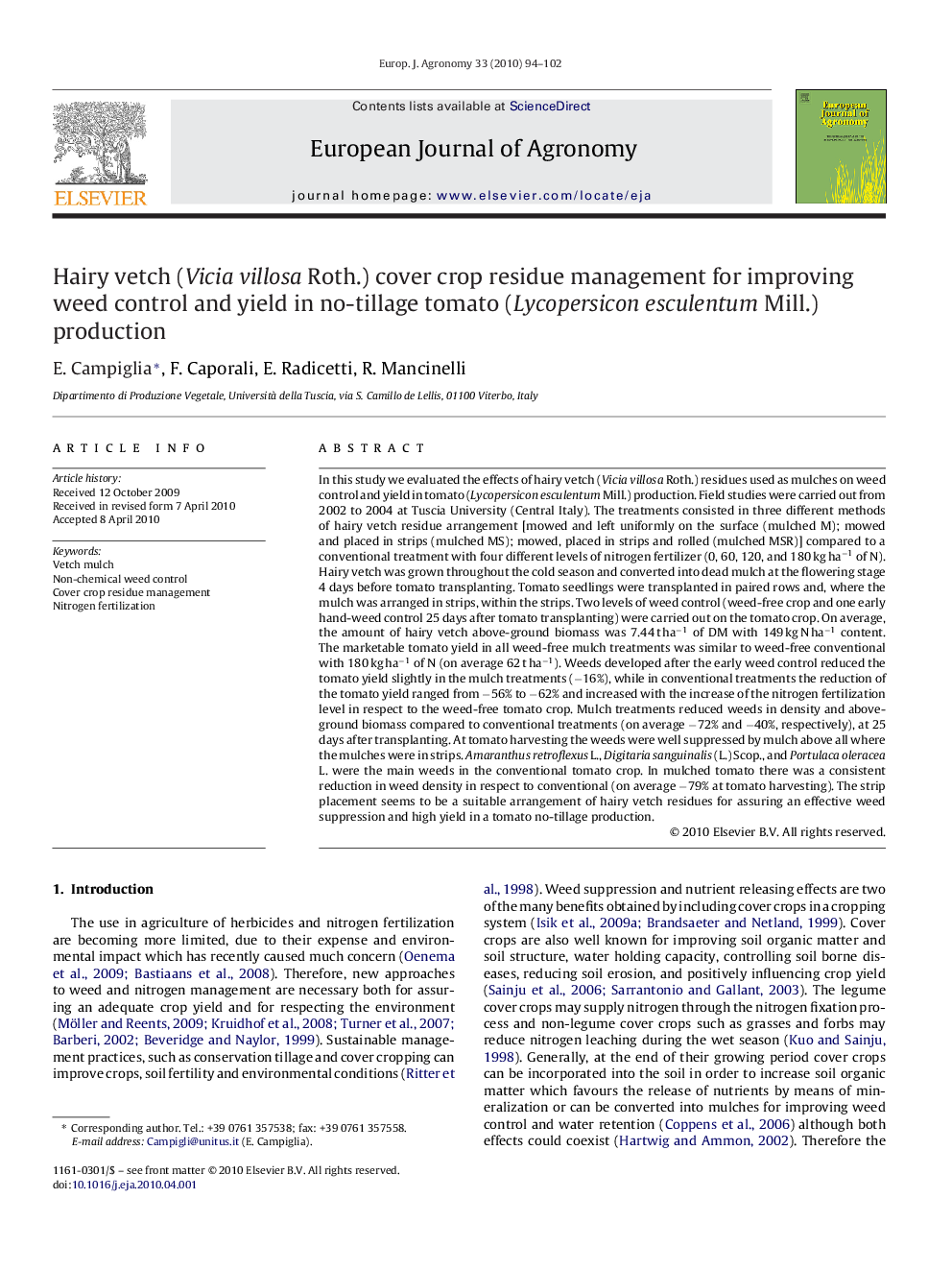| Article ID | Journal | Published Year | Pages | File Type |
|---|---|---|---|---|
| 4509296 | European Journal of Agronomy | 2010 | 9 Pages |
In this study we evaluated the effects of hairy vetch (Vicia villosa Roth.) residues used as mulches on weed control and yield in tomato (Lycopersicon esculentum Mill.) production. Field studies were carried out from 2002 to 2004 at Tuscia University (Central Italy). The treatments consisted in three different methods of hairy vetch residue arrangement [mowed and left uniformly on the surface (mulched M); mowed and placed in strips (mulched MS); mowed, placed in strips and rolled (mulched MSR)] compared to a conventional treatment with four different levels of nitrogen fertilizer (0, 60, 120, and 180 kg ha−1 of N). Hairy vetch was grown throughout the cold season and converted into dead mulch at the flowering stage 4 days before tomato transplanting. Tomato seedlings were transplanted in paired rows and, where the mulch was arranged in strips, within the strips. Two levels of weed control (weed-free crop and one early hand-weed control 25 days after tomato transplanting) were carried out on the tomato crop. On average, the amount of hairy vetch above-ground biomass was 7.44 t ha−1 of DM with 149 kg N ha−1 content. The marketable tomato yield in all weed-free mulch treatments was similar to weed-free conventional with 180 kg ha−1 of N (on average 62 t ha−1). Weeds developed after the early weed control reduced the tomato yield slightly in the mulch treatments (−16%), while in conventional treatments the reduction of the tomato yield ranged from −56% to −62% and increased with the increase of the nitrogen fertilization level in respect to the weed-free tomato crop. Mulch treatments reduced weeds in density and above-ground biomass compared to conventional treatments (on average −72% and −40%, respectively), at 25 days after transplanting. At tomato harvesting the weeds were well suppressed by mulch above all where the mulches were in strips. Amaranthus retroflexus L., Digitaria sanguinalis (L.) Scop., and Portulaca oleracea L. were the main weeds in the conventional tomato crop. In mulched tomato there was a consistent reduction in weed density in respect to conventional (on average −79% at tomato harvesting). The strip placement seems to be a suitable arrangement of hairy vetch residues for assuring an effective weed suppression and high yield in a tomato no-tillage production.
